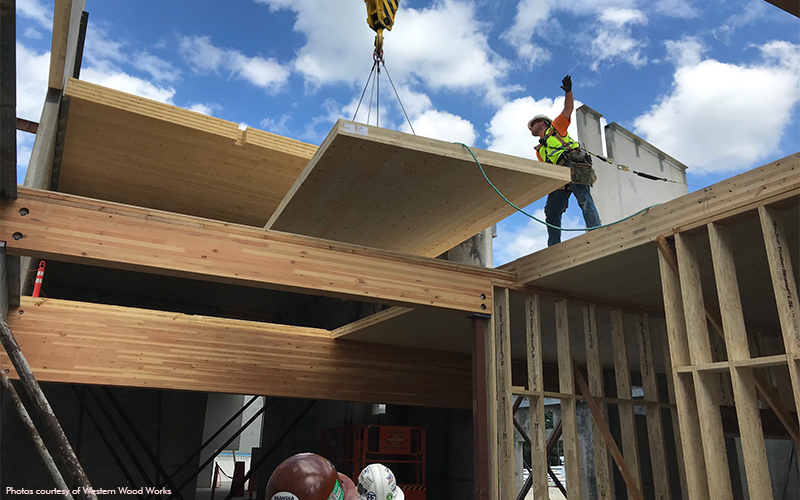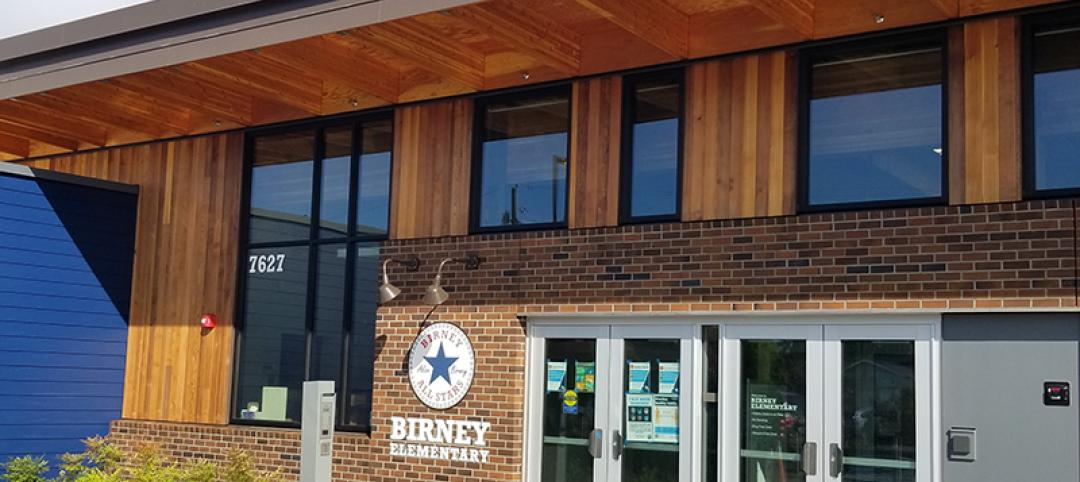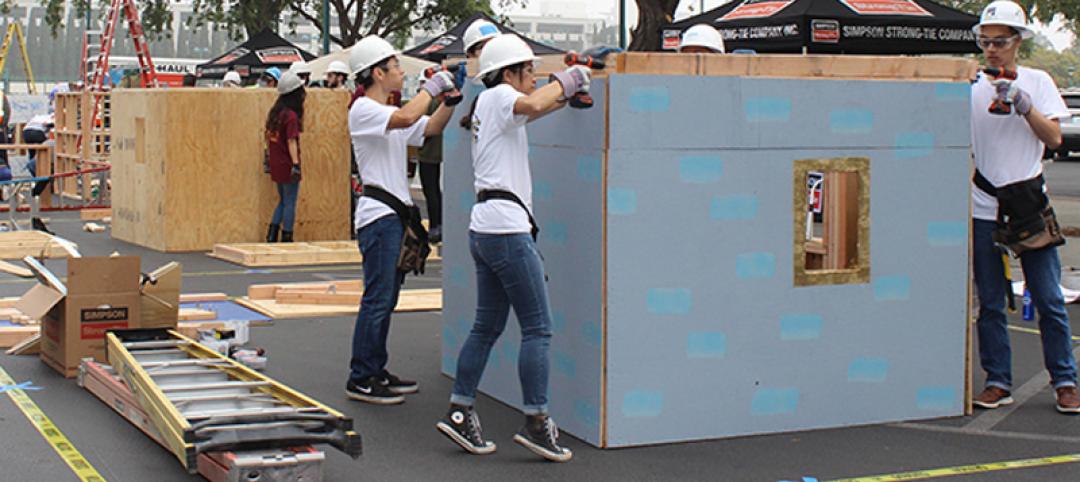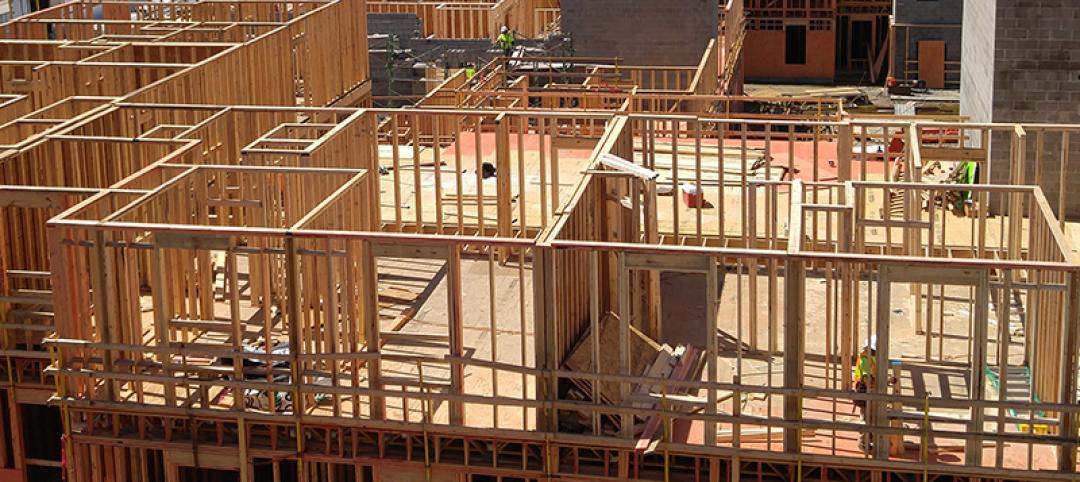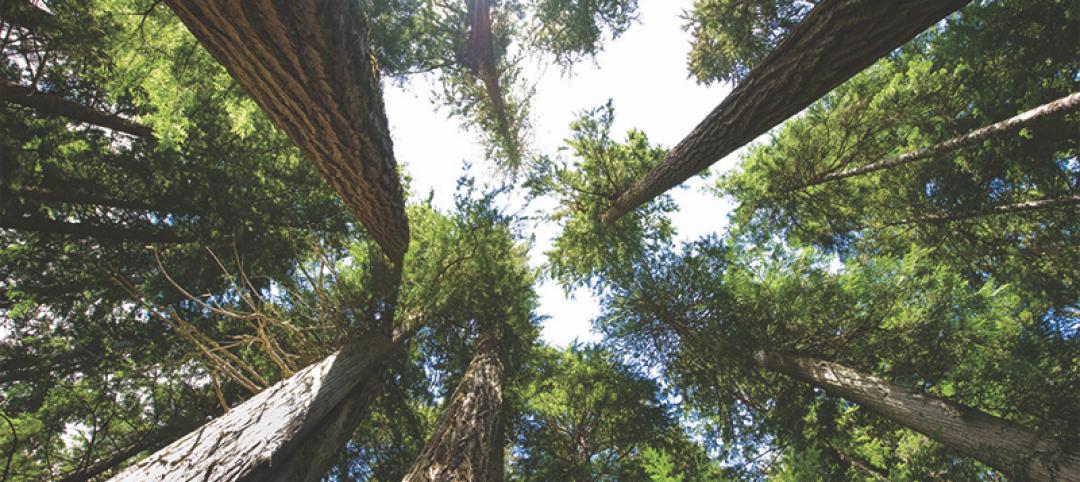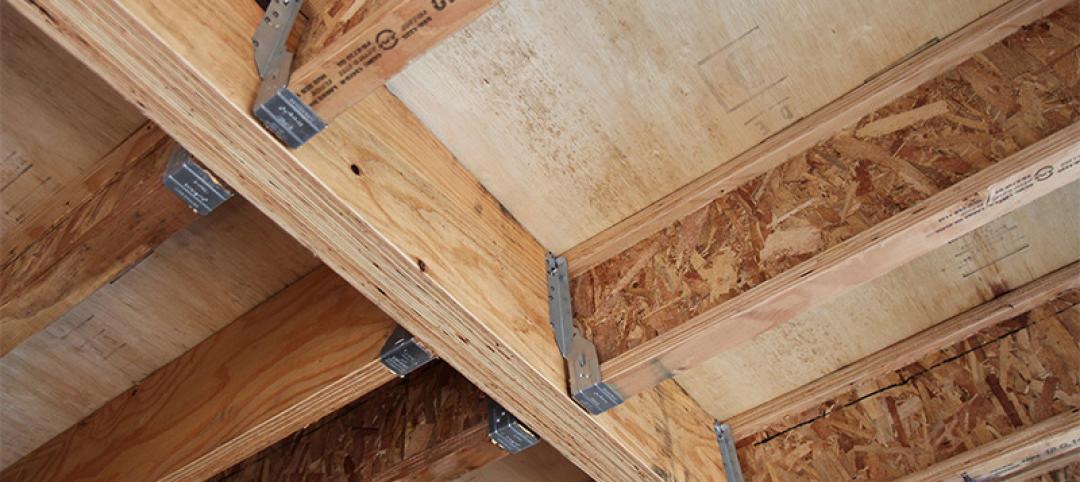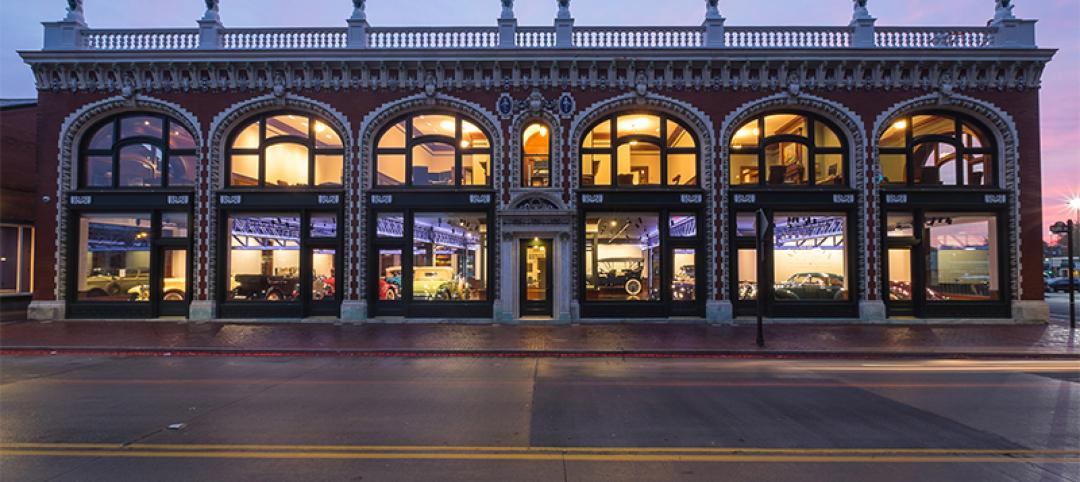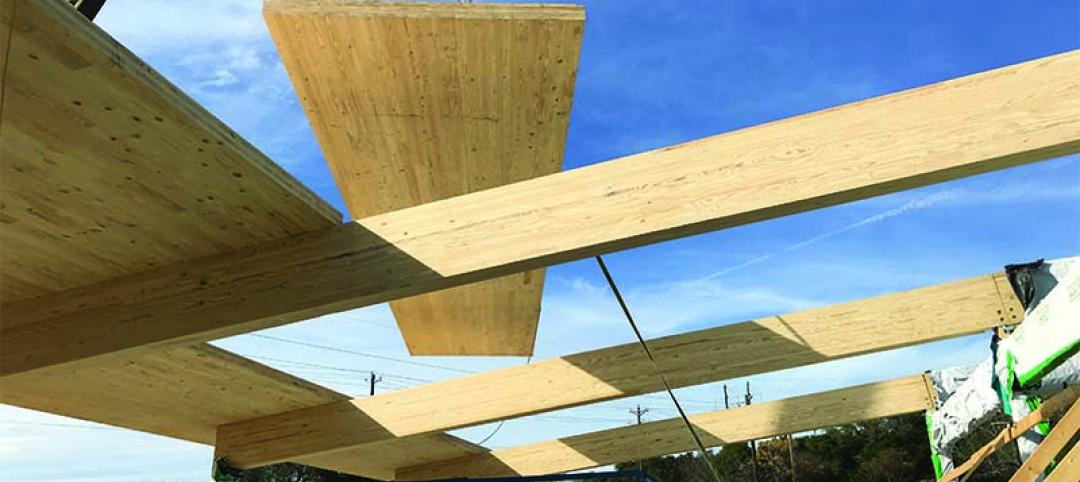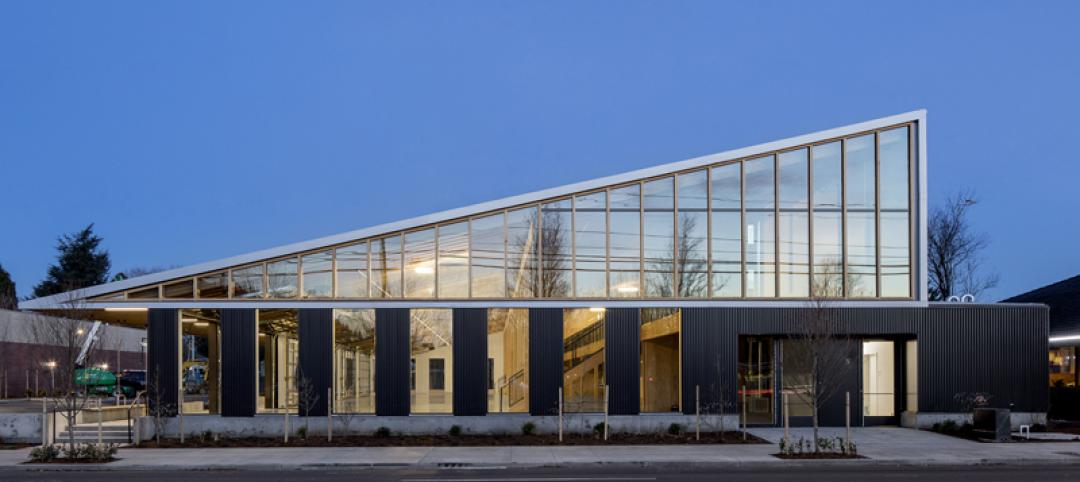The McLaughlin Middle School/Marshall Elementary School, located in Vancouver, Washington, is one of the largest mass timber projects in the Pacific Northwest, at an astonishing 203,000 square feet. The project was carried out by Western Wood Structures, a local construction company based out of Tualatin, Oregon, that specializes in mass timber installation.
Mike Dyer, project manager for Western Wood Structures, is no stranger to the benefits of engineered wood products. His company has been building with mass timber for more than 50 years. “We love the product because it doesn’t have the natural flaws of traditional timber. It’s a very consistent building material” he said.
Vancouver Public Schools wanted to begin incorporating wood into its schools.
“People are moving toward wood because of the environmental benefits,” Dyer said. “It’s sustainable and renewable, and people feel good about that.”
Environmental Benefits of Engineered Wood
Increased demand for wood products encourages healthy forest maintenance, and the regeneration absorbs more greenhouse gases. Wood sequesters carbon from the environment as the tree grows, and buildings made with engineered wood continue to have a net benefit on the environment. More at apawood.org.
In addition to sustainability, the school district was also enamored by the warmth and natural aesthetic of the mass timber. The school district chose to leave the wood exposed, so people could see its natural beauty and the structural elements, creating a strong focal point.
Biophilia and Learning
Wood products can positively affect the learning environment. The natural beauty and aesthetic of exposed wood creates a warm and enriching atmosphere. More research is backing the hypothesis of “biophilia,” or the tendency for humans to prefer natural materials. Research suggests that natural materials, like engineered wood, support increased focus and productivity that is conducive to an effective learning environment. Read more about biophilia and the research behind it at apawood.org.

Optimizing Efficiency
The Vancouver school project used cross-laminated timber (CLT) and glulam, provided by APA member Structurlam, for the main horizontal systems. Using mass timber significantly increased the speed of erection. “Our crew was able to set entire floors of CLT panels in just a few days, which would normally take a week or two with traditional framing,” Dyer said. “The beauty of mass timber is that all the fabrication required for the project is done when it shows up. It’s much more precise and very beneficial for the timeline of the project.”
Engineered wood products can be manufactured in dimensions specific to the project, resulting in less wasted scrap materials. Traditional lumber requires cutting, drilling and tooling on location, which requires more labor hours, produces more waste and creates more room for errors.
The mass timber improved safety on the job site. “It allowed our crew to spend less time preventing safety issues and constructing components to walk on, because instead, they had a large, sturdy panel to walk on,” Dyer said. “It reduced the number of our crew members that were in the air.”
The project was met with innovation by Western Wood Structures. “We developed a special rigging form for lifting the different sized CLT panels and ensuring they were precisely set in place,” he said.
With over 800 CLT panels, and more than 700 different shapes and weights, the company needed a rigging system that was simple, but could accommodate the variety. Western Wood Structures’ project engineers designed, developed and manufactured a rigging system that allowed the crew to install over 30 panels, or 10,000 square feet of floor or roof a day.
Read more at www.apawood.org/schools.
More from Author
APA – The Engineered Wood Association | Nov 12, 2020
Engineered Wood Gets an Easy A
A Washington school district creatively leveraged the aesthetic and acoustic benefits of engineered wood products in their newly constructed school.
APA – The Engineered Wood Association | Oct 26, 2020
2019 Timber-Strong Design Build Competition
Six student teams competed at the National Council of Structural Engineers Association (NCSEA) Summit to design and build the most efficient and creative wood structure.
APA – The Engineered Wood Association | Aug 20, 2020
Back to basics: Framing big buildings right
A look into the most common wood construction framing errors, and how to avoid them, in today’s nonresidential construction industry.
APA – The Engineered Wood Association | Jul 14, 2020
Measuring the environmental performance of engineered wood products
“Green” is just a buzzword unless environmental impacts can be demonstrated scientifically.
APA – The Engineered Wood Association | Jun 12, 2020
Fire Phraseology FAQs: FRT versus Fire Rating
Fire resistant, fire retardant, fire rating: what’s the difference?
APA – The Engineered Wood Association | May 11, 2020
The basics of wood frame connection design
Good connection design makes use of wood’s natural characteristics and harnesses its strengths.
APA – The Engineered Wood Association | Apr 15, 2020
Engineered wood in retrofits and remodels
A cost-effective replacement for hard-to-source timbers in historical projects.
APA – The Engineered Wood Association | Mar 3, 2020
Mass timber has banks seeing green
First United Bank Invests in First Mass Timber Buildings in Texas, Oklahoma
APA – The Engineered Wood Association | Feb 14, 2020
Beauty and the Budget
Engineered Wood’s Appeal is More Than Skin Deep

